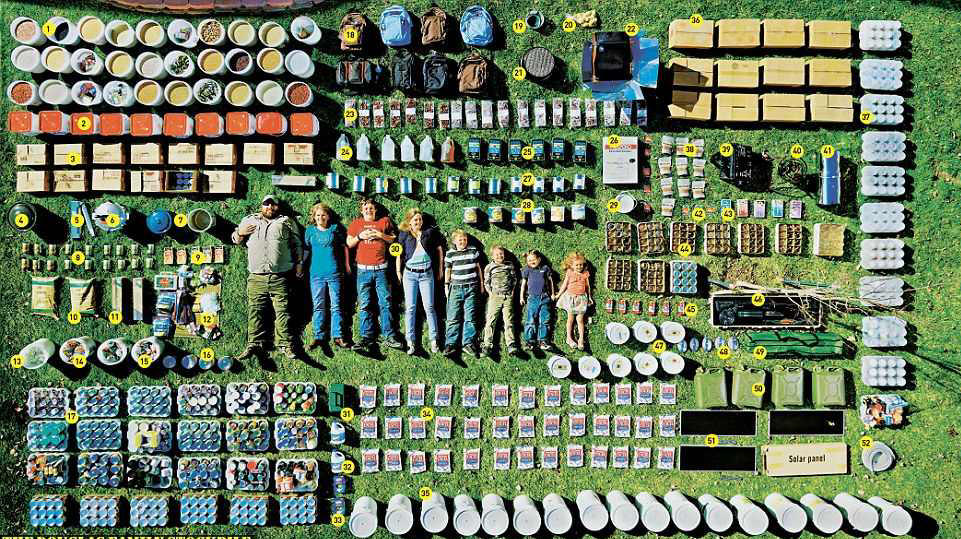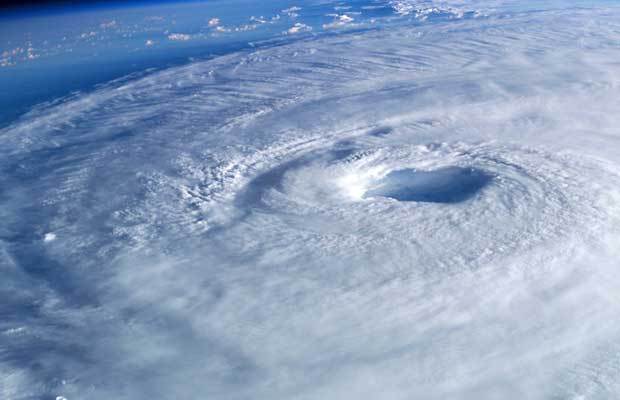What Is Your SHTF Plan?
Do you have an awesome bug out vehicle already sitting in the garage of your remote bunker somewhere miles away from the nearest highway? Do you have a fully stocked Bug Out Bag crammed under your desk at work with all the supplies you need including 200 feet of rope to shimmy down the windows of your 8th floor office? Do you have an entire craftsman tool cabinet full of medical supplies loaded up and ready to roll into action? If your AR-15’s are all oiled and neatly stacked in the family safe, if your camouflage is pressed and neatly hanging in the closet and everyone knows where their favorite flavors of MRE’s are, but nobody knows the reason for these supplies, you might have a problem.
As preppers we can easily tick off a lot of needs. We need to prepare. I need to get additional tactical training. Our family needs more medical and first aid training, not to mention a larger garden. We need to be more self-sufficient. We need to know more about living off the land and on and on. Like I said in other posts, prepping is a lifestyle not a destination so I don’t have too much faith that the Needs in my life will ever go away. I should always need something if only to learn more, give more and think more. Needs only stop when you stop living and I don’t plan to do that anytime soon, but what we need to do before almost any other prepping activity is just that. PLAN. It is great if you have that gear I mentioned above, but if the SHTF, do you have a SHTF Plan?
Why do you need to have a plan?
Having a SHTF Plan for what you would actually do if the SHTF is the very first thing you need to do and it will accomplish a couple of things. First, it will help you take into consideration your current state and responsibilities. Most of the preppers I talk to have some driving idea that makes them want to be better prepared for whatever life throws at them. It could be they are worried about an Economic Collapse, or it could be something as simple as a winter storm. All of the people you see at the grocery store right before a big storm want generally the same thing that preppers want. The only difference is that they wait till the last minute to do anything about it. These last minute shoppers who wipe out the grocery store shelves are thinking about the storm and how they need to prepare just like you and me. The lesson I am trying to preach is that we know storms come every year. We know that the power could go out. It could get really hard without some of our normal conveniences and we need to plan for that well ahead of time. Having a plan will help you think of all these things that the people grabbing the last gallons of milk off the shelf are thinking of, but you will have the benefit of doing it while you are calm and the lights are still on.
The second thing a SHTF Plan will do is give you a checklist that you can use to both purchase supplies you need or plan on amounts of items you should have stocked up appropriate to the amount of people you are preparing for. Which leads to the second point.
Who should be included in your SHTF Plan?
Most of us aren’t single bachelors or bachelorettes. Humans are social people for the most part so when we talk about taking care of ourselves during a crisis, there is almost always someone else involved. This might be a girlfriend or boyfriend, parent, children, sibling or elder relative. It might just be your best buddy Joe. When you start to put everything you need to account for in your SHTF Plan you will also need to expand the scope out to the others in your prepping circle of influence. Water is one of the first items to check off on this plan but you need to take into consideration how many people will be using that water. Fortunately, water is just about the easiest survival prep that you can plan for. One gallon of water per person, per day. So for 4 people for 1 week you would need to set aside (4 X 7 = 28) gallons. The amount of water you need to store should be the first and easiest thing in the plan in terms of supplies.
For myself, I have a family. We also have 2 relatives within a short distance so I am already planning on my family plus 2. Then you have to consider pets and other relatives that might show up if the disaster allows and timing is right so my plan could have to adjust to an additional 8 people if I was truly prepared. In reality, I have started with my immediate family and I am building up from there so the extra 8 is a goal, but not yet a reality. The point is that having a plan will help you come up with these numbers.
It may be that your SHTF plan involves others at a different bug out location. In this case, the food and water requirements might need to be allocated differently and as opposed to storing these all at your present location; caches at your alternate location or hidden along the route might be needed. In this situation the plan will likely involve several families and be much more collaborative than a simple plan you scratch out on the back of a notebook.
Where are you planning to go if the SHTF?
Since we mentioned an alternate bug out location above, the plan will obviously need to take that into consideration for two main reasons. First, who will be at this location you are planning to go to and how will you get there. The first part is usually when we get into trouble as larger groups start to intermingle because it is hard to stay civil in a high stress environment and even harder to accept rules that you might disagree with. Tempers can flare and in a situation where your plan is to bug out with Joe and his family to his hunting cabin in the woods you could be in for a nasty surprise. Joe’s wife Lisa might have told three of her friends who all show up with their families and plan on eating the supplies you and Joe have stocked up.
To be equitable, Joe could be the problem too. Once you show up, Joe might not be as accommodating as he once was. If the stress and fear is high enough, Joe might greet you with a sawed off shotgun and tell you to turn your fully loaded suburban around. Anything like this can happen regardless of any plans you have made with Joe, your oldest buddy since kindergarten even with a plan. Having a plan isn’t going to guarantee that people won’t change their minds. The best SHTF Plan in the world won’t keep you from getting double-crossed, but the sooner you and Joe can agree on a plan and the longer that your family and Joe’s family works on, discusses and debates the plan, the better off you will be.
If your plan is to shelter in place, then you usually only have to worry about the disaster coming to your street. This could be the weather/event or it could be your neighbors that you have to consider. Which leads to…
What do you need to consider if the SHTF?
This is the real meat and potatoes of the plan and isn’t easily constrained to a paragraph or two. For me, I lump almost everything survival related that I “need” into 4 main categories; Water, Food, Shelter and Security. My survival plan takes all of these into account based upon how many people I need to consider in my plan and where we are planning to be then multiplies those figures by the duration I am planning to be prepared for. This is just the baseline, but it is something you can easily build off of because the essentials are there.
So, let’s say you have to take care of 4 people and you are planning on sheltering in place. You live in a decent sized city, but not a large metropolitan area and you want a plan to initially cover 1 month of not being able to access any other supplies. You would know that at a minimum you would need 120 gallons of water to keep 4 people alive and healthy for 30 days. Next you would need to plan on 30 days’ worth of food for 4 people taking various considerations like food storage if the power goes out. Depending upon where you live and the time of year, shelter could be a very real concern. If you lost power or the ability to heat your home in the middle of winter, what would you need to do?
Assuming you check the box on the essentials, you have to consider security. If you are living through an emergency that lasts 30 days, there will be others that are living through that emergency too. There will be people who haven’t made any preparations to survive for a month without daily trips to the store. There will be yet others who simply want to take what you have and it is possible with the right circumstances that you could have to defend your home and protect your family from these people.
Security is another large subject, but we cover a lot of those aspects on Final Prepper so I won’t go into specifics here. I would recommend you have something in the way of security to deal with the potential for these situations and add this to your SHTF plan.
How will you take care of X if the SHTF?
Dwight Eisenhower said “Plans are nothing; planning is everything.” Are you going to be able to plan for every conceivable option? Are you going to develop the most perfect prepper checklist in the world that accounts for every single variable known and unknown to man? No. What you can do is start with a good plan though and the sheer act of planning will open your eyes to a lot of different potentials. For me personally, I have discounted a lot of different scenarios from happening to me and haven’t planned specifically for them because I don’t believe there is a high likelihood of anything similar happening to us where we are at this time.
Planning has given me the opportunity to make these mental arguments with myself and discuss things with my spouse. We have had the ability to think about things in a way that I wouldn’t be able to as easily or as effectively do in a crisis mode. If there was a genuine crisis, I would revert to action based upon the preparations that we have already made. Most of us would do the same but the good thing about the plan is that I have already had these thought exercises. I have already stored away provisions that could be used in any number of different emergencies and we have thought about a thousand what-ifs already. Even if a disaster I wasn’t expecting occurred, the plan would be what we could fall back on. If everything failed and the plan had to be thrown out, we would still have the experience of thinking through the problems we could encounter if the SHTF and that would give us a huge advantage over others who wait until the last minute. Make a plan now and I guarantee that your life will be easier no matter what life throws at you.
Do you have an awesome bug out vehicle already sitting in the garage of your remote bunker somewhere miles away from the nearest highway? Do you have a fully stocked







